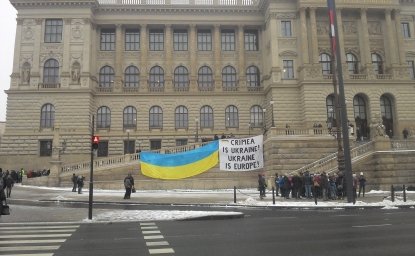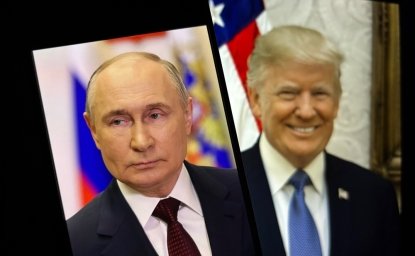Looking Back at the Origins of Soviet Studies

If you had surveyed the scope of American scholarly research on foreign countries in 1939, declared Joseph Berliner, Professor Emeritus, Department of Economics, Brandeis University during a 19 October 2000 lecture at the Kennan Institute, you would have concluded that the USSR was a very minor player on the world scene, with very little impact on the lives of Americans. By the 1950s, according to Robert Tucker, Professor Emeritus, Department of Politics, Princeton University, there was an intense, well-informed debate about the nature of the Soviet political order. Both speakers and the lecture's discussant, Abbott Gleason, Professor, Department of History, Brown University, and former Director, Kennan Institute, stressed the importance of newly accessible Soviet archives in evaluating the predictions of the early Soviet studies specialists.
To address the lack of expertise on their new wartime ally, the U.S. government established an intelligence gathering unit in the newly created Office for Strategic Services (OSS) in 1941. After the war, veterans from this unit went on to work in U.S. universities, educating the first post-war generation of scholars who took up a specialization on the Soviet Union within their disciplines. The rapid expansion of Soviet studies, a product of the cold war rather than an expression of purely scholarly interest in Soviet society, was funded by government and foundation grants, and took the form of research centers, graduate programs, research grants, and journals. By 1950, the first wave of new scholars were completing their doctorates and launching their careers, and by 1960 the field of scholarship (soon dubbed by the then-disparaging term sovietology) was in full swing.
Because of the secretive nature of the Soviet order, this new field of study did not lend itself to direct examination. Instead, scholars were forced to find alternate methods of interpreting this system. Tucker noted that a particularly formative experience for him, while serving in the U.S. embassy in Moscow in the 1940s, was going to the Lenin Library to research changes in Russian policy toward Poland after the victory over Napoleon in the war of 1812. He learned that the Soviet Union had to be interpreted in the context of Russian history. It was this experience, and such writings as George Kennan's comparing Stalin's rule to the evolution of the tsarist autocracy, that led Tucker to conclude, "the one-party system had given way to a one-person system; the ruling party to a ruling personage."
During the 1940s and 1950s, theories on the nature of totalitarianism were developed and debated. Tucker stated that according to the writings of Hannah Arendt and Zbigniew Brzezinski, the Soviet Union, as a totalitarian power, was driven by ideology rather than Stalin as an individual. This model did not fit well with what we now know actually happened in the Soviet Union, Tucker declared.
In early 1953, for example, Soviet Russia was paralyzed with fear over official pronouncements signaling the start of a new round of purges. Stalin's death in March 1953 not only forestalled this new round of purges, but led to a subsiding of internal terror. On the day after Stalin's funeral, Georgi Malenkov, then the head of the Soviet government, stated in a meeting of party leaders that "much happened in connection with [Stalin's] personality cult we consider it obligatory to bring to an end the policies of the personality cult." This statement was first published in 1991, Tucker noted.
In the social sciences demanding concrete data, such as economics, the lack of access to data presented obvious challenges to early Soviet specialists. Other obstacles were less obvious but equally challenging, stated Berliner. One example is that political constraints on Soviet economists curtailed any kind of balance in Soviet writings on their own economy. Berliner recounted meeting as a young scholar with a senior economist at the Institute of Economics of the Russian Academy of Sciences, and how he brashly lectured on price theory and the importance of using interest rates to properly measure the cost of capital. "You know," replied the Soviet economist, "I wrote a number of articles on that subject before I was arrested."
The offset to this lack of openness, according to Berliner, was the Soviet practice of "self-criticism." Intended to shield society from corruption, the accounts in the Soviet press never implicated top officials. These stories did describe all sorts of schemes at the enterprise level and became an invaluable source of information on how the Soviet economy actually worked.
Perhaps the biggest criticism against Soviet specialists, noted Berliner, is their failure to predict the collapse of the USSR. But, Berliner pointed out, they had correctly identified the sources of inefficiency and retardation. If Soviet specialists were geologists instead of social scientists, they could be said to have correctly identified the fault lines where the earthquake might occur, but lacked the means to forecast when and how it would occur.
Commenting on the presentations, Gleason added that new information from the opened archives has provided valuable insights, especially on the conduct of Soviet foreign policy. He emphasized, however, the early critical work of the two speakers in shaping our understanding the Soviet Union with only the scarcest of data available to rely upon.
Author


Kennan Institute
After more than 50 years as a vital part of the Wilson Center legacy, the Kennan Institute has become an independent think tank. You can find the current website for the Kennan Institute at kennaninstitute.org. Please look for future announcements about partnership activities between the Wilson Center and the Kennan Institute at Wilson Center Press Room. The Kennan Institute is the premier US center for advanced research on Eurasia and the oldest and largest regional program at the Woodrow Wilson International Center for Scholars. The Kennan Institute is committed to improving American understanding of Russia, Ukraine, Central Asia, the South Caucasus, and the surrounding region through research and exchange. Read more

Explore More
Browse Insights & Analysis
The OSCE is a Good Value for America

Infographic | Russia's Illegal Annexation of Crimea

Russia’s Indigenous Communities and the War in Ukraine
